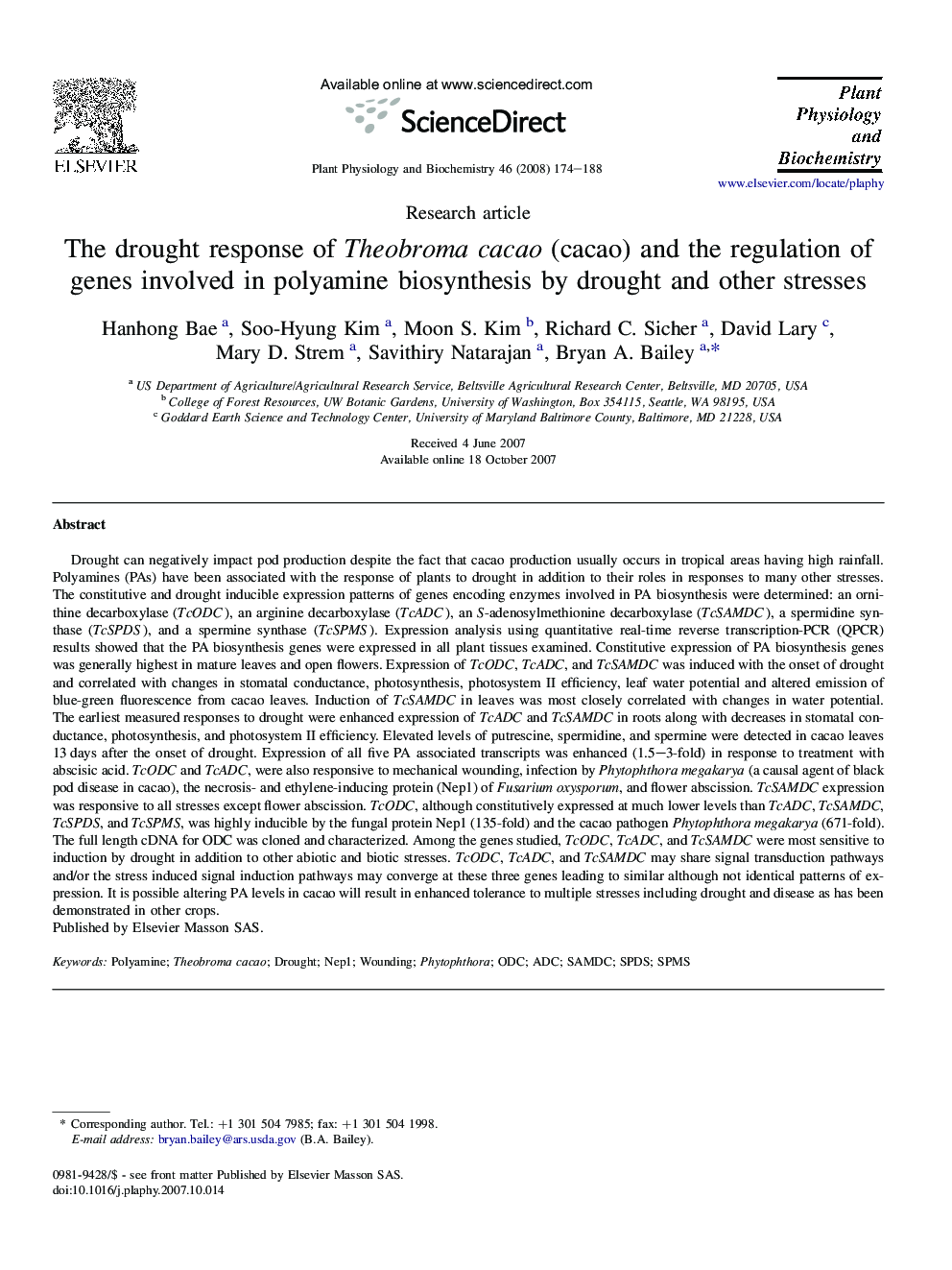| کد مقاله | کد نشریه | سال انتشار | مقاله انگلیسی | نسخه تمام متن |
|---|---|---|---|---|
| 2015402 | 1067560 | 2008 | 15 صفحه PDF | دانلود رایگان |

Drought can negatively impact pod production despite the fact that cacao production usually occurs in tropical areas having high rainfall. Polyamines (PAs) have been associated with the response of plants to drought in addition to their roles in responses to many other stresses. The constitutive and drought inducible expression patterns of genes encoding enzymes involved in PA biosynthesis were determined: an ornithine decarboxylase (TcODC), an arginine decarboxylase (TcADC), an S-adenosylmethionine decarboxylase (TcSAMDC), a spermidine synthase (TcSPDS), and a spermine synthase (TcSPMS). Expression analysis using quantitative real-time reverse transcription-PCR (QPCR) results showed that the PA biosynthesis genes were expressed in all plant tissues examined. Constitutive expression of PA biosynthesis genes was generally highest in mature leaves and open flowers. Expression of TcODC, TcADC, and TcSAMDC was induced with the onset of drought and correlated with changes in stomatal conductance, photosynthesis, photosystem II efficiency, leaf water potential and altered emission of blue-green fluorescence from cacao leaves. Induction of TcSAMDC in leaves was most closely correlated with changes in water potential. The earliest measured responses to drought were enhanced expression of TcADC and TcSAMDC in roots along with decreases in stomatal conductance, photosynthesis, and photosystem II efficiency. Elevated levels of putrescine, spermidine, and spermine were detected in cacao leaves 13 days after the onset of drought. Expression of all five PA associated transcripts was enhanced (1.5–3-fold) in response to treatment with abscisic acid. TcODC and TcADC, were also responsive to mechanical wounding, infection by Phytophthora megakarya (a causal agent of black pod disease in cacao), the necrosis- and ethylene-inducing protein (Nep1) of Fusarium oxysporum, and flower abscission. TcSAMDC expression was responsive to all stresses except flower abscission. TcODC, although constitutively expressed at much lower levels than TcADC, TcSAMDC, TcSPDS, and TcSPMS, was highly inducible by the fungal protein Nep1 (135-fold) and the cacao pathogen Phytophthora megakarya (671-fold). The full length cDNA for ODC was cloned and characterized. Among the genes studied, TcODC, TcADC, and TcSAMDC were most sensitive to induction by drought in addition to other abiotic and biotic stresses. TcODC, TcADC, and TcSAMDC may share signal transduction pathways and/or the stress induced signal induction pathways may converge at these three genes leading to similar although not identical patterns of expression. It is possible altering PA levels in cacao will result in enhanced tolerance to multiple stresses including drought and disease as has been demonstrated in other crops.
Journal: Plant Physiology and Biochemistry - Volume 46, Issue 2, February 2008, Pages 174–188